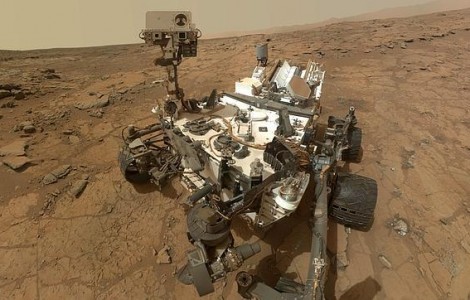 When Portuguese and Spanish explorers discovered the American continent at the beginning of the XNUMXth century, they contaminated the new world with microorganisms.
When Portuguese and Spanish explorers discovered the American continent at the beginning of the XNUMXth century, they contaminated the new world with microorganisms.
Without knowing it, they took with them viruses and bacteria that, unknown to native peoples, caused these countless deaths. Back in Europe, they also brought with them microorganisms from the new world.
Now, new robotic explorers unveil new horizons on Martian soil. And despite all the care taken to sterilize them before sending them to Mars, there are signs that these technologically advanced devices may have contaminated the red planet with bacteria.
In fact, and according to what was released last week at the annual meeting of the American Society for Microbiology, recent investigations show that the Curiosity robot, which arrived on Mars in August 2012, may have carried bacteria of the genus with it. Bacillus.
There is evidence that spores of these bacteria can resist the sterilization processes used on these space exploration craft. In addition, surface samples taken from Curiosity before its launch have been shown to be contaminated with 65 species of bacteria!
On the other hand, experiments carried out on the International Space Station show that there are bacteria (eg, Bacillus pumilus) that can survive for at least 18 months in the extreme conditions of temperature, vacuum and radiation existing in space!
This suggests that it should not be excluded that any bacteria, or their spores, that followed with the Curiosity robot on its nearly two-year voyage to Mars, managed to survive the hardships of the space environment.
At the scientific meeting referred to above, results of experiments were also released that show that bacteria of various genera (including methanogenic bacteria, such as those of the species Methanothermobacter wolfeii) can survive and reproduce in conditions similar to those believed to exist in the most superficial layers of the Martian soil.
So, and in short, we can say that most likely the Curiosity robot, which today explores Mars, may have taken bacteria with it, that they may have survived under the conditions of space travel and that, once they arrived on the Martian soil, they may have encountered conditions not not only for their survival but also for their reproduction.
Assuming all these factors have taken place, we could be colonizing Mars with terrestrial bacteria. In other words, our technology is seeding life throughout the solar system!
Remember that one of the scientific missions of the Curiosity robot is to look for signs of life on Mars. Ironically, this mission could be doomed to failure.
Not because life does not exist on Mars, but because we will never be able to say that an eventual discovery is not already contaminated by the life itself transported from Earth to Mars, aboard Curiosity and other missions.
This aspect will have to be duly taken care of in all future investigations and possible news related to the existence of life on Mars.
Author Antonio Piedade
Science in the Regional Press – Ciência Viva

















Comments